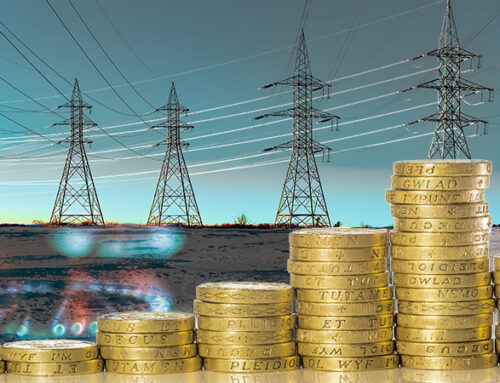On 11 March, E.On announced it had reached agreement to acquire RWE’s 76.8% stake in Innogy SE through a share swap that would grant RWE a 16.67% share in E.On SE which would be issued by way of a 20% capital increase against a contribution in kind from existing authorised capital. E.On will also transfer to RWE most of its renewables business and the minority interests currently held by its PreussenElektra subsidiary in the RWE-operated nuclear power plants Emsland and Gundremmingen.
RWE will receive the entire Innogy renewables business, the innogy gas storage business and Innogy’s stakes in the Austrian energy supplier Kelag. RWE will make a cash payment to E.On of EUR 1.5 billion.
In addition, E.On plans to make a voluntary public takeover offer in cash to the shareholders of Innogy, in order to acquire the shares no held by RWE. RWE will not participate in this offer which values Innogy at around EUR 22 billion.
The transaction is subject to approval the relevant competition authorities and is expected to complete by the end of 2019.
New group profiles
The past decade has been a difficult one for German energy companies, with rapid decarbonisation and the sudden decision in 2011 to discontinue nuclear generation adding to the strains caused by the financial crisis. The entire sector has been forced to re-structure, refocusing their businesses and exiting non-core areas.
E.On and RWE both split their business, but took essentially opposite approached: E.On spun off its fossil fuel portfolio into Uniper (subsequently sold to Fortum), while retaining the renewables, network and retail operations; RWE spun off its retail, networks and renewables operations into Innogy, retaining its fossil fuel activities. Both companies held on to their nuclear power businesses.
Following the proposed tranasction, E.On will focus on retail and network activities, only retaining a position in generation through its nuclear assets. RWE will focus on generation, with only a small position in retail and networks though its stake in E.On.
The two companies are essentially taking bets on opposite ends of the value chain. According to David Hatcher, partner for energy and resources at consultancy Baringa:
“…it’s not 100 per cent clear where the optimum value is going to lie in the generation through to retail value chain in the future market. The fact that E.On is moving downstream into the regulated networks and customer solutions space, and RWE is moving upstream, shows that two organisations are both placing bets at different ends of the market. Very interestingly, RWE does get that slight hedge of the 16 per cent in E.On.”
According to Ahmed Farman, of brokerage firm Jefferies, the deal would help E.On achieve scale and efficiencies in networks and retail, and transform RWE into a leading generator with a healthier balance of fossil fuel and renewable projects, although the firms face around two more years of costly re-structuring. This could be particularly burdensome for E.On as it will inherits EUR 18 billion of debt from Innogy:
“Our first view is that new E.On would have an EBITDA of EUR 7 billion excluding synergies, but would have debt in excess of EUR 40 billion. Therefore, it is unclear to us how the new E.On balance sheet would work,”
– Ahmed Farman, Jefferies
Not yet a done deal
The proposed transaction is subject to regulatory and competition approvals, and there is also a risk that other bidders may emerge with interest in some of these businesses.
The deal will see each company significantly strengthening its position in its chosen part of the value chain – something that will certainly be of interest to competition authorities. RWE will become the third largest renewables firm in Europe with an installed capacity of wind, hydro and solar generation in excess of 8 GW. A further 1.5 GW of offshore wind is either under construction or in advanced planning stages.
E.On has indicated that up to 7% of its workforce will be cut as the Innogy businesses are integrated into the group – any job losses in Germany will be scrutinised by the powerful unions and attract political attention.
In the UK, the deal will make RWE one of the largest renewable generators in the market, along with Orsted, SSE and Scottish Power. However, the effect on the retail market will be more significant, making E.On the largest electricity supplier and second largest gas supplier behind British Gas, with market shares of 24% and 19% respectively.
Innogy owns npower, which is currently awaiting CMA approval for merging its UK retail business with that of rival SSE, to launch a new, independent energy retailer, in which Innogy would retain a 34% stake. SSE and npower have both insisted that the merger remains on track.
Is this the start of a new round of energy M&A?
Various commentators now expect M&A transactions in the European power sector. The greater financial flexibility E.On/RWE deal would bring to Germany’s largest utilities could protect them against hostile bids from the likes of Engie, Enel or Iberdrola, and could allow them to pursue targets of their own, particularly in the UK.

In its Power transactions and trends report late last year, EY said it expected five trends to energy in European power and utilities transactions:
- Increase in retail consolidation: The Government’s proposed energy price cap will put further pressure on margins, which is likely to prompt consolidation within the wider European market.
- Continued investment in renewable assets: An estimated 110 GW of renewable energy is expected to be commissioned across Europe between 2018 and 2025, requiring an annual investment of US$ 18 billion.
- New investment opportunities in batteries and gas: About 80 GW of European coal and nuclear generation is expected to close by 2025, creating new opportunities for investments in gas generation, battery storage and digital capabilities to improve system flexibility and reliability.
- Increased investment in new energy: Utilities are increasingly seeking investment opportunities in new energy, particularly around the provision of EV charging infrastructure.
- Increase in sector convergence: Recent moves from oil companies to play a larger part the power and utilities sector is seen as part of a wider trend.
“It’s clear the stepping stones for sector transformation have been laid in Europe and, with new strategies in place, we expect the focus in 2018 to be on growing EBITDA. True recovery of the sector will depend on regional economic growth to boost electricity demand beyond the savings made through energy efficiency measures,”
– EY
It’s early days for the E.On/RWE deal, but it is not surprising to see large utilities re-shaping themselves in response to the radical shifts seen in the market in recent years. Expect more to come…






Leave A Comment